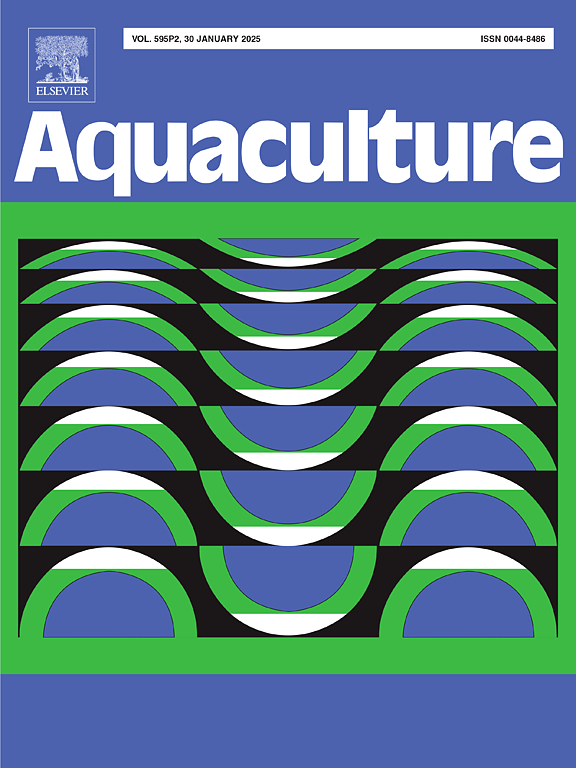Deep learning approach for genetic selection of stress response in the Amazon fish Colossoma macropomum
IF 3.9
1区 农林科学
Q1 FISHERIES
引用次数: 0
Abstract
This study examined skin color variation in tambaqui (Colossoma macropomum) in response to stress, focusing on morphological and physiological color change mechanisms. A computer vision system (CVS) based on the DeepLab V3 model with ResNet-50 was developed to automate countershading intensity detection. Images from 3780 fish across two populations were used to train a model and estimate genetic parameters for countershading intensity. Morphological color changes were induced in confinement tanks, with countershading intensity observed after 10 days. Physiologically, the α-MSH hormone expanded melanophores by 80 %, intensifying countershading. The CVS achieved high accuracy (88.2 %) for large-scale phenotyping, with moderate to high heritability estimates for color phenotypes: 0.456 ± 0.122 for black pixel percentage, 0.494 ± 0.128 for mean pixel intensity, and 0.192 ± 0.059 for the number of pixels. Low correlations with growth traits suggest that countershading selection can occur without affecting growth, highlighting its potential in breeding programs to improve appearance and stress resilience.
基于深度学习的亚马逊鱼巨像鱼应激反应遗传选择研究
本研究探讨了坦巴奎(Colossoma macropomum)在应激条件下皮肤颜色的变化,重点探讨了皮肤颜色的形态和生理变化机制。基于DeepLab V3模型和ResNet-50开发了一种自动反遮光强度检测的计算机视觉系统(CVS)。来自两个种群的3780条鱼的图像用于训练模型并估计反遮光强度的遗传参数。在封闭池中诱导形态颜色变化,10 d后观察反遮光强度。生理上,α-MSH激素使黑素细胞扩大了80%,增强了反遮蔽作用。CVS在大规模表型分析中获得了很高的准确度(88.2%),对颜色表型具有中等到高的遗传率估计:黑色像素百分比0.456±0.122,平均像素强度0.494±0.128,像素数0.192±0.059。与生长性状的低相关性表明,反遮荫选择可以在不影响生长的情况下发生,突出了其在育种计划中改善外观和抗逆性的潜力。
本文章由计算机程序翻译,如有差异,请以英文原文为准。
求助全文
约1分钟内获得全文
求助全文
来源期刊

Aquaculture
农林科学-海洋与淡水生物学
CiteScore
8.60
自引率
17.80%
发文量
1246
审稿时长
56 days
期刊介绍:
Aquaculture is an international journal for the exploration, improvement and management of all freshwater and marine food resources. It publishes novel and innovative research of world-wide interest on farming of aquatic organisms, which includes finfish, mollusks, crustaceans and aquatic plants for human consumption. Research on ornamentals is not a focus of the Journal. Aquaculture only publishes papers with a clear relevance to improving aquaculture practices or a potential application.
 求助内容:
求助内容: 应助结果提醒方式:
应助结果提醒方式:


